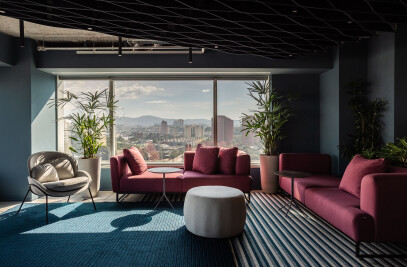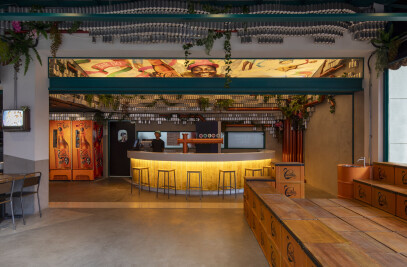The Construction Technology Center (CTE), a consultancy and management company in theconstruction sector, has a new headquarters in São Paulo, with an architecture project designed to meet its pillars: technology, innovation and sustainability.
With total freedom of creation, the layout proposed by SuperLimão was inspired by the universityenvironment. The CTE project is not an open space, a conceptwidelyspreaded in recentyears. The programprovided for twolarge areas and a variety of meeting rooms of differentsizes, as well as fixedseating for employees. The terraces also gained dual function. In addition to being occupied for moments of relaxation, the outdoor areas are also designed for small meetings.
In partnership with Riccó, SuperLimão designed the corporate furniture. The insertionof triangulartables, took a lessmonotonous shape compared to orthogonal spaces. In CTE the architecture also took this concept to the design of meeting rooms. Triangular roomswerecreated for better use of space. In addition to the more formal spaces, a grandstand was designed to accommodate other employeeinteractions.
As one of the main attributes of CTE is sustainability, in the elaboration of the concept the architecture sought to mix a neutral aspect with the insertion of colored materials, based on 4 elements (water, earth, air and fire) to compose the interior design. In wet areas, for example, the shade of blue prevails, there are mixtures of rubber and carpetfloors; in the environmentswereused materials applying the concept of Biophilia in the project.
But sustainability is not just about materials - it's all recycled or recyclable in CTE. SuperLimão worked with the materials in their natural form. To play with the insertion of colors on the tables, was made a selection of strikinglycoloredtreeleaves (real color, not painting) and the lining is concrete, bucketsfilled with colorfulacoustic materials, leaving the premisesapparent.
Another novelty are the acousticpanels on the tables. By having the possibility of leaving one sidecoated with formica and another with acousticpanel, each collaboratorcanchoose to place a panel, customizing their table. By far, this composition has created an interestingmovementinto space, which has gainedvariety of colors and more life.
The canopygained concrete panels not to be too heavy, with a profile similar to a viaduct. The office entrance, on the other hand, received a ventilated facade from ULMA, a technological and cementitiousplate that allows to vary the designs, referring to the bodycells. For design development, the parameterization technique was used, which managed to embrace a largeamount of space over a largerperimeter and at a possible cost.


































